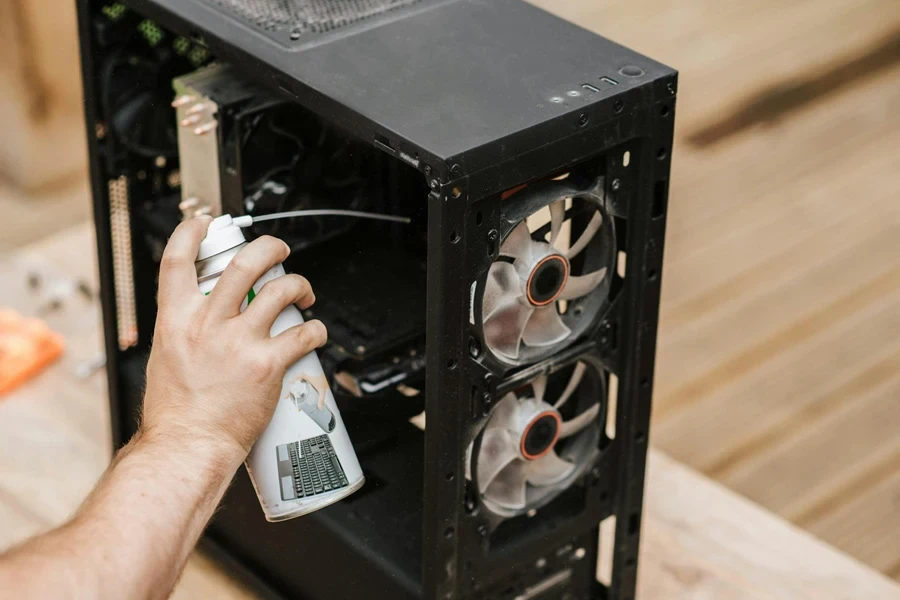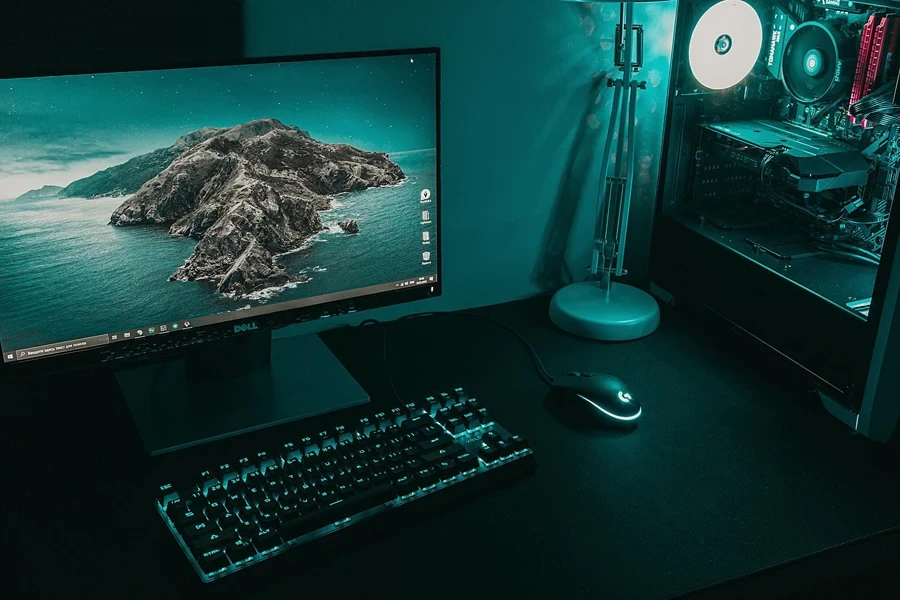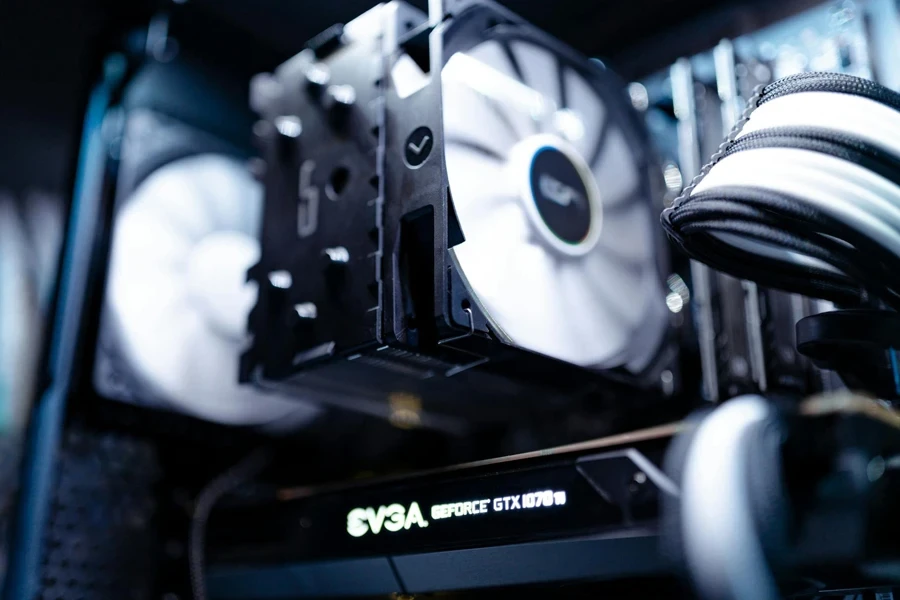Table of Contents
● Introduction
● Market overview
● In-depth analysis of computer case features
● Things to consider when selecting products
● Conclusion
Introduction
The computer case market has dramatically transformed, transitioning from offering mere shells for hardware protection to becoming pivotal in enhancing PC performance and design flair. No longer just an afterthought, modern computer cases cater to a broad spectrum of demands, harmonizing with the intricate needs of enthusiasts, gamers, and professional setups alike. They bring to the table not just robustness but also critical cooling solutions, noise reduction, and a platform for personal expression through customizable aesthetics. This evolution reflects the changing landscape of technology and user expectations, where functionality and form must coexist seamlessly. As we delve deeper into the specifics, it’s clear that selecting the right computer case is a nuanced decision that impacts not just the safety of components but the overall user experience.
Market overview

Global market growth
The computer cases market is witnessing a significant transformation, projected to grow from a valuation of USD 3993.9 million in 2022 to USD 6466.55 million by 2031, at a compound annual growth rate (CAGR) of 5.5%. This growth is driven by a blend of technological advancements, evolving consumer preferences, and strategic shifts in work arrangements that have expanded the market’s scope beyond traditional boundaries.
Amidst the changing landscape, the influence of online retailing has become a pivotal factor in shaping market dynamics. The convenience and accessibility offered by e-commerce platforms have democratized access to a wide range of computer cases, catering to diverse consumer needs and preferences. This shift towards online purchasing is not just reshaping consumer behavior but is also compelling manufacturers and retailers to adapt their strategies, focusing on digital channels to capture the growing market segment.
Moreover, the market’s expansion is further fueled by the increasing demand for personal computing devices that cater to various professional and personal requirements. This demand is supported by the broadening spectrum of computer cases that not only serve protective functions but also enhance performance through advanced cooling systems, noise reduction technologies, and aesthetically pleasing designs. As the market continues to evolve, these trends highlight the importance of staying attuned to consumer preferences and technological advancements to maintain competitiveness and meet the dynamic needs of the global market.
In-depth analysis of computer case features

Material and design innovations
Diving deeper into the technical nuances, modern computer cases have embraced a myriad of materials and design elements, pushing the boundaries of both form and function. The use of steel, particularly SECC (Steel, Electrogalvanized, Cold-rolled, Coil), remains prevalent due to its durability and ease of fabrication. However, aluminum has become a favored material for high-end cases because of its lighter weight and superior thermal conductivity, aiding in passive cooling by dissipating heat more efficiently than steel.
The adoption of tempered glass panels marks a significant innovation, moving beyond aesthetics to impact the case’s thermal management. Unlike traditional opaque materials, tempered glass allows for direct visualization of the case’s interior, necessitating cleaner cable management and component arrangement. However, it’s not just about looks; these glass panels often come with vents or are designed in conjunction with strategic airflow paths to ensure that they do not impede cooling while still displaying the components in all their RGB-lit glory. The integration of RGB lighting itself has evolved, with manufacturers incorporating addressable RGB (aRGB) LEDs that offer unprecedented customization, allowing users to control lighting effects and colors down to the individual LED, often via desktop software or mobile apps.
Functionality beyond protection
In terms of functionality, advancements in case design have led to more sophisticated cooling solutions. Beyond merely accommodating a greater number of fans, modern cases are engineered with specific airflow channels, directing cool air to high-heat components like CPUs and GPUs while expelling hot air efficiently. This is complemented by dust filters that are strategically placed at air intake points to maintain clean internal environments without sacrificing airflow. Furthermore, the proliferation of liquid cooling has seen cases designed with dedicated mounting points for radiators, ranging from 120mm to 360mm, allowing for both closed-loop (AIO) and custom loop setups, catering to both enthusiasts and gamers seeking peak performance with minimal noise.
Emerging Trends
Emerging trends also indicate a shift towards modular case designs, offering users the flexibility to reconfigure internal layouts according to their hardware needs. This modularity extends to tool-less designs for drive bays and expansion slots, facilitating easier upgrades and maintenance. The industry has also seen a rise in cases designed for specific user groups, such as compact Mini-ITX cases optimized for space-saving setups or sprawling Full-Tower cases that cater to the high-performance needs of gamers and content creators, balancing the trade-offs between space, cooling efficiency, and portability.
Things to consider when selecting products
Selecting the right computer case is a nuanced process that hinges on several technical considerations, blending compatibility, thermal management, and integration of functional features with aesthetic choices.
Compatibility and size
When delving into compatibility, it’s essential to understand the nuances between different motherboard form factors. Full Tower cases, accommodating E-ATX motherboards, offer expansion slots for up to 8 or more HDDs/SSDs and multiple GPUs, making them ideal for enthusiasts seeking maximal upgradeability. Mid-Tower cases, compatible with ATX and sometimes Micro-ATX motherboards, provide a balanced choice, supporting 2-4 HDDs/SSDs and dual GPU setups, catering to mainstream gamers and PC users. Mini-ITX cases, the smallest form factor, prioritize space efficiency and portability, often with bespoke cooling solutions to fit the compact space. The choice between these sizes impacts not only the physical footprint but also the potential for future hardware upgrades and customization.
Airflow and cooling options

Technical details in airflow and cooling are pivotal for maintaining system stability and performance. Modern cases feature engineered airflow paths, designed to channel cool air directly to hotspots like CPUs and GPUs while expelling warm air efficiently. This is often achieved through a combination of front intakes, rear and top exhausts, and strategic placement of components for unobstructed airflow. Additionally, the incorporation of water-cooling support in case designs, with dedicated spaces for radiators up to 360mm, addresses the cooling needs of overclocking enthusiasts and high-performance setups. Understanding the thermal dynamics of a build will guide the selection of a case with appropriate airflow design and cooling options, ensuring the components operate within optimal temperature ranges.
Aesthetic and functional features
From a technical standpoint, aesthetic features such as RGB lighting are now more sophisticated, with support for software control allowing users to synchronize lighting across multiple components for a cohesive look. Cable management has evolved beyond mere tie-down points; modern cases offer behind-the-motherboard routing channels, rubber grommets, and even PSU shrouds that help conceal cables, contributing to both aesthetics and improved airflow by reducing clutter. Front-panel connectivity is another area where technical advancements are notable, with newer cases featuring USB 3.1 or Type-C ports, HD audio inputs, and even built-in fan or RGB controllers, providing users with easy access and control over their system’s performance and appearance.
Conclusion

Navigating the computer cases market demands an in-depth comprehension of compatibility, thermal management, and the equilibrium between aesthetic appeal and functionality. Staying abreast of market trends and product innovations is pivotal, as these elements significantly dictate the performance, efficiency, and overall satisfaction derived from computing setups. The ideal computer case acts as the cornerstone of a build, reflecting not only the technological requirements but also the stylistic preferences of the user. Therefore, a thorough exploration and understanding of the nuances in computer cases facilitate more informed and tailored selection decisions, enhancing the PC building experience.



